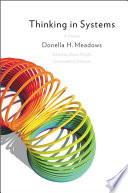

The first key idea in 'Thinking in Systems' is the importance of understanding systems in their entirety rather than in isolation. A system is defined as a set of interconnected components that work together to achieve a common goal. By recognizing the relationships and interactions between different elements within a system, we can better understand how changes in one part of the system can affect the whole. This holistic perspective allows for more effective problem-solving and decision-making. For instance, in environmental issues, one might consider how pollution from a factory impacts not just the local ecosystem but also public health, the economy, and social structures. By adopting a systems thinking approach, we can identify leverage points where small changes can lead to significant improvements, thereby fostering sustainable solutions.
Continue readingFeedback loops are central to understanding systems. They are the mechanisms through which systems self-regulate and adapt. There are two types of feedback loops: reinforcing (positive) and balancing (negative). Reinforcing loops amplify changes and can lead to exponential growth or decline, while balancing loops work to stabilize a system by counteracting changes. For example, in a population growth model, a reinforcing loop may describe how increased births lead to a larger population, which in turn leads to more births. Conversely, a balancing loop may illustrate how resource limitations (like food supply) can slow down population growth. Understanding these loops helps in predicting system behavior and identifying potential interventions.
Continue readingStocks and flows are foundational concepts in systems thinking. Stocks are the elements of a system that can be measured at a specific point in time, while flows represent the changes to those stocks over time. For example, in a water tank system, the amount of water in the tank is the stock, while the rate of water entering and exiting the tank are the flows. Recognizing how stocks and flows interact is crucial for understanding system dynamics. It allows us to visualize how changes in flows can impact stocks, and vice versa. This understanding is particularly important in resource management, where sustainable practices depend on balancing inflows and outflows.
Continue readingLeverage points are strategic places within a system where a small shift can lead to substantial changes in the overall system. Identifying these points is crucial for effective intervention. For instance, in a business context, a leverage point might be improving employee morale, which can lead to increased productivity and lower turnover rates. The book emphasizes that not all parts of a system are equal; some have more influence than others. By focusing on these leverage points, individuals and organizations can create significant positive changes with relatively little effort.
Continue readingResilience refers to a system's ability to absorb disturbances and still maintain its core functions. In 'Thinking in Systems', the author discusses the importance of building resilience within systems to ensure they can withstand shocks and stresses. This concept is particularly relevant in the context of climate change, economic instability, and social upheaval. Systems that are resilient can adapt to changes and recover from disruptions more effectively. Strategies for enhancing resilience include diversifying resources, fostering strong relationships within the system, and encouraging flexibility and adaptability.
Continue readingMental models are the deeply held beliefs and assumptions that shape how individuals perceive and interact with systems. These models influence decision-making and can either facilitate or hinder effective problem-solving. The book encourages readers to examine their own mental models and consider how they might be limiting their understanding of complex systems. By challenging and updating these models, individuals can improve their ability to navigate and influence systems. This process often involves seeking diverse perspectives and being open to new information.
Continue readingThe interconnectedness of systems is a crucial theme in 'Thinking in Systems'. The author illustrates how various systems—social, economic, environmental—do not operate in isolation but are part of a larger web of interactions. This interconnectedness means that changes in one system can have cascading effects on others. For instance, economic policies can impact social structures, which in turn can affect environmental outcomes. Understanding these connections is essential for addressing complex global challenges, as solutions often require a multi-faceted approach that considers the interplay between different systems.
Continue reading